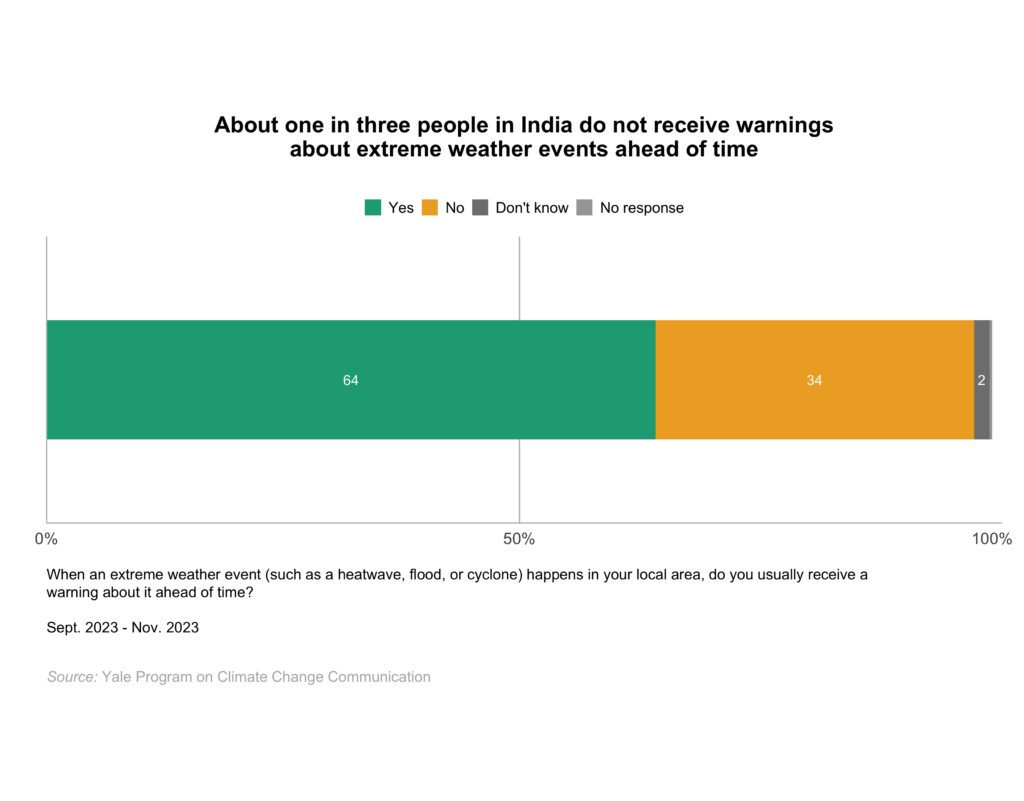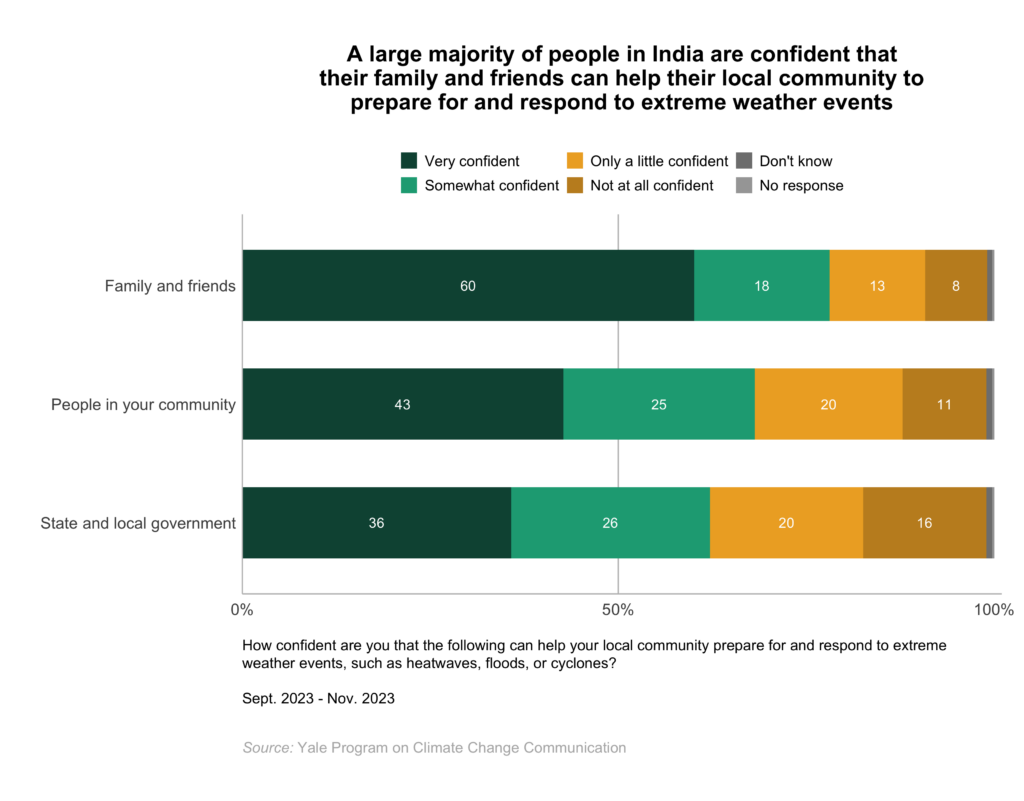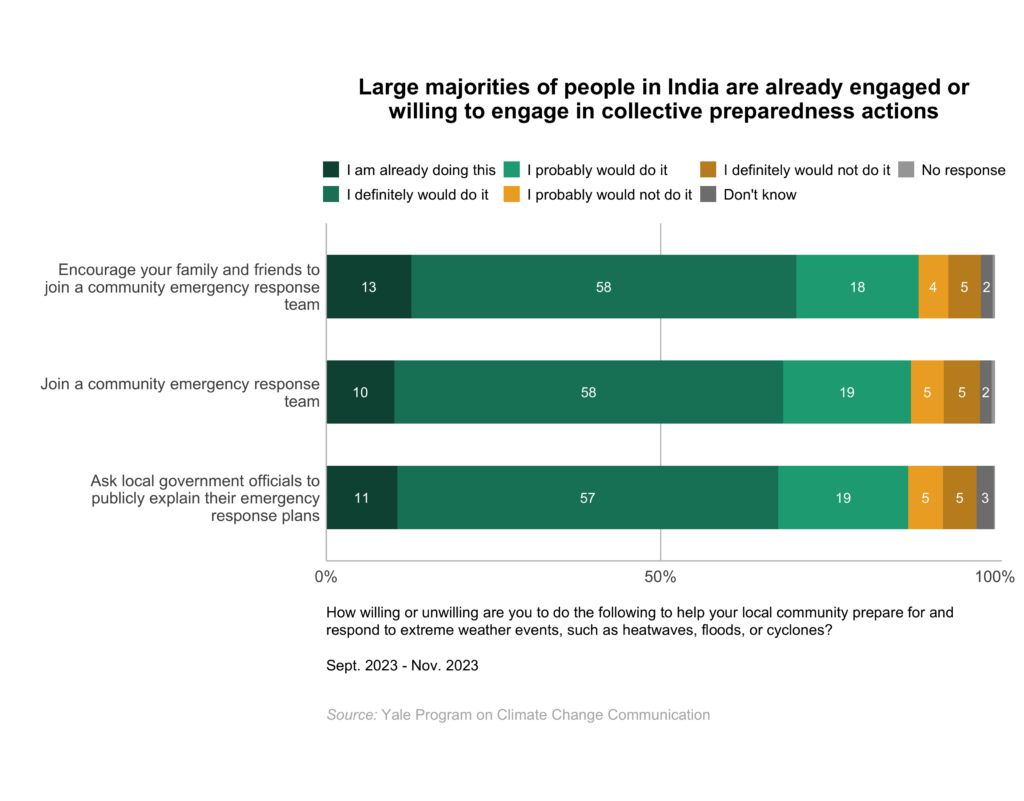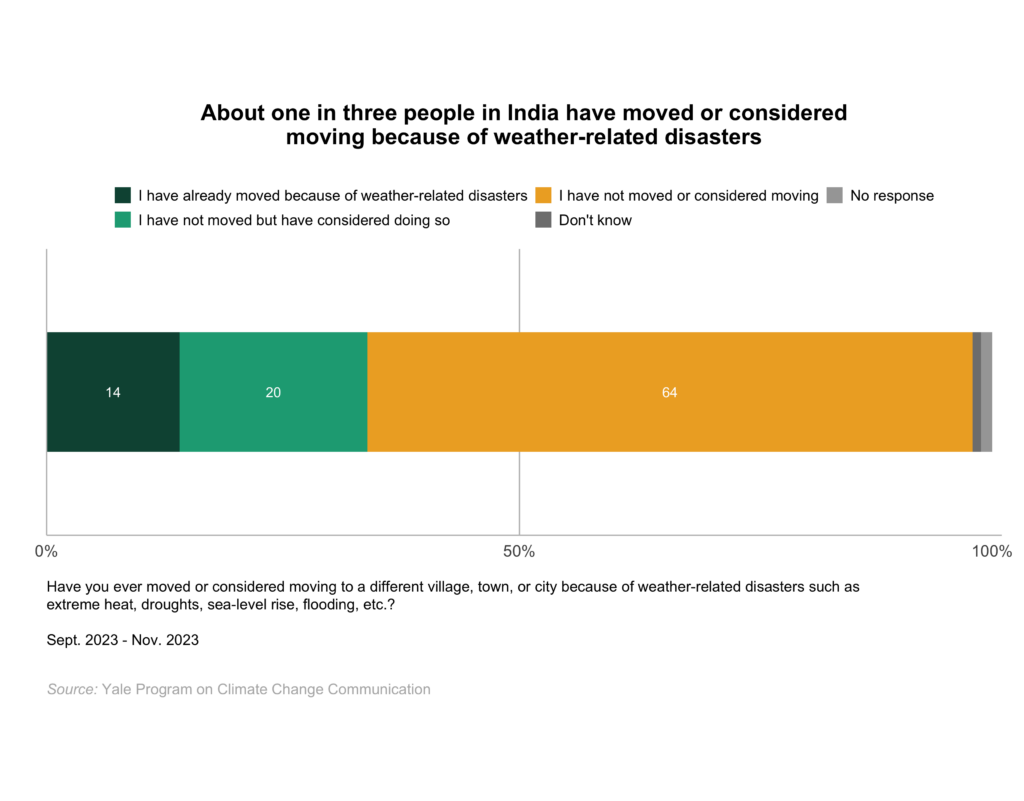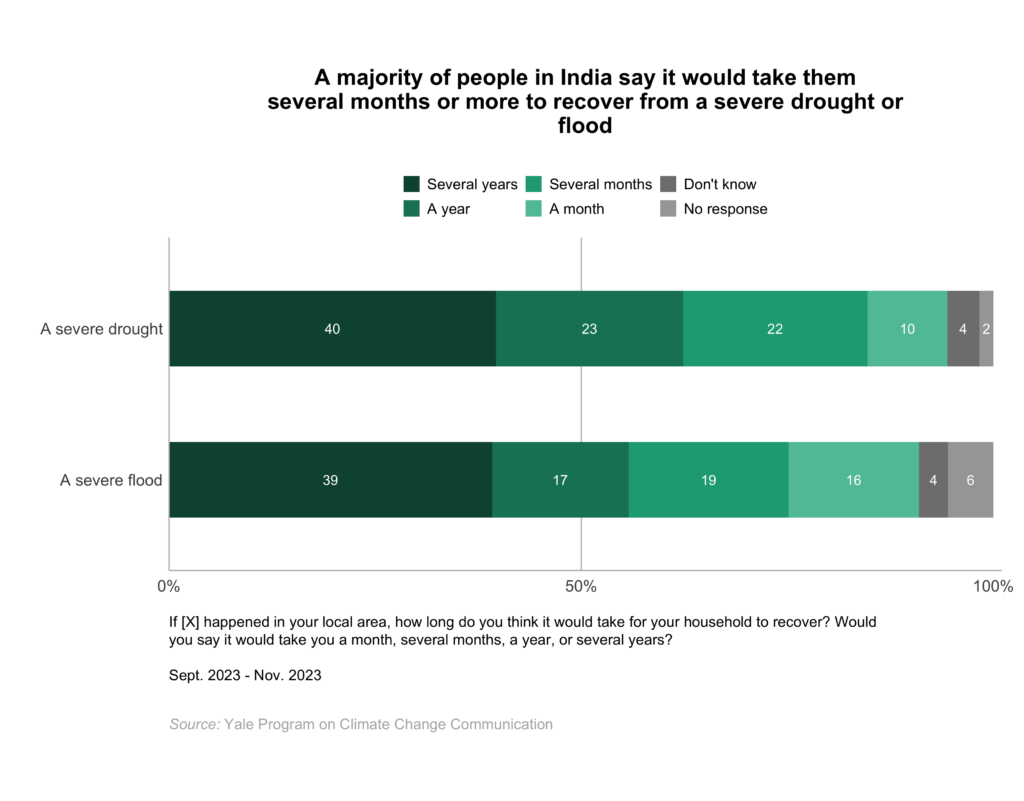Report · May 16, 2024
Climate Change in the Indian Mind, 2023
By Anthony Leiserowitz, Jagadish Thaker, Marija Verner, Emily Goddard, Jennifer Carman, Seth Rosenthal, Naga Raghuveer Modala, Mallika Talwar, Yashwant Deshmukh, Gaura Shukla, Jennifer Marlon, Matthew Ballew and Matthew Goldberg
Filed under: Behaviors & Actions and Beliefs & Attitudes
1. Local Environmental Hazards: Vulnerability and Resilience
1.1 Large majorities of people in India are worried about hazards in their local area.
Large majorities of people in India are either “very worried” or “moderately worried” about various environmental hazards harming their local areas. These include agricultural pests and diseases (87%), extinction of plant and animal species (86%), severe heat waves (85%), droughts and water shortages (85%), severe air pollution (85%), famines and food shortages (83%), severe cyclones (76%), and severe floods (71%).
1.2 About two in three people in India receive advanced warnings about extreme weather, but about one in three do not.
About two in three people in India (64%) receive warnings ahead of time when an extreme weather event (such as a heat wave, flood, or cyclone) happens in their local area. However, about one in three (34%) say they do not receive such warnings.
1.3 A large majority of people in India are confident that their family and friends can help their local community to prepare for and respond to extreme weather events.
A large majority of Indians (78%) say they are either “very confident” or “somewhat confident” that their family and friends can help their local community to prepare for and respond to extreme weather events such as heat waves, floods, or cyclones. Large majorities are also confident that people in their communities (68%) or state and local government (62%) can play such a role.
1.4 Large majorities of people in India are already engaged or willing to engage in collective preparedness actions.
Asked how willing or unwilling they are to encourage their family and friends to join a community emergency response team to help their local community prepare for and respond to extreme weather events such as heat waves, floods, or cyclones, about nine in ten people in India (89%) say they are either “already doing this” (13%), or are “definitely” (58%) or “probably” (18%) willing to do it. In contrast, few people in India (9%) say they either “probably” (4%) or “definitely” (5%) would not do it.
Asked how willing or unwilling they are to join a community response team, a large majority of people in India (87%) say they are either “already doing this” (10%), or are “definitely” (58%) or “probably” (19%) willing to do it. In contrast, few people in India (10%) say they either “probably” (5%) or “definitely” (5%) would not do it.
Asked how willing or unwilling they are to ask local government officials to publicly explain their emergency response plans, a large majority of people in India (87%) say they are either “already doing this” (11%), or are “definitely” (57%) or “probably” (19%) willing to do it. In contrast, few people in India (10%) say they either “probably” (5%) or “definitely” (5%) would not do it.
1.5 About one in three people in India have moved or considered moving because of weather-related disasters.
About one in three people in India (34%) say have either already moved or considered moving because of weather-related disasters such as extreme heat, droughts, sea-level rise, flooding, or others. This includes 14% who say they “have already moved because of weather-related disasters” and 20% who say they “have not moved but have considered doing so.” About two-thirds of people in India (64%) say they “have not moved or considered moving.”
1.6 A majority of people in India say it would take them several months or more to recover from a severe drought or flood.
Three in four people in India (75%) say it would take their household several months or more to recover from a severe flood. A large majority (85%) also say it would take several months or more to recover from a severe drought. This includes about four in ten respondents who say it would take them several years to recover from a severe flood (39%) or a severe drought (40%).
The percentage of people who say it would take their household several months or more to recover from a severe flood is 12 percentage points higher than in 2021–2022. The percentage of people who say it would take their household several months or more to recover from a severe drought is 11 percentage points higher than in 2021–2022.

